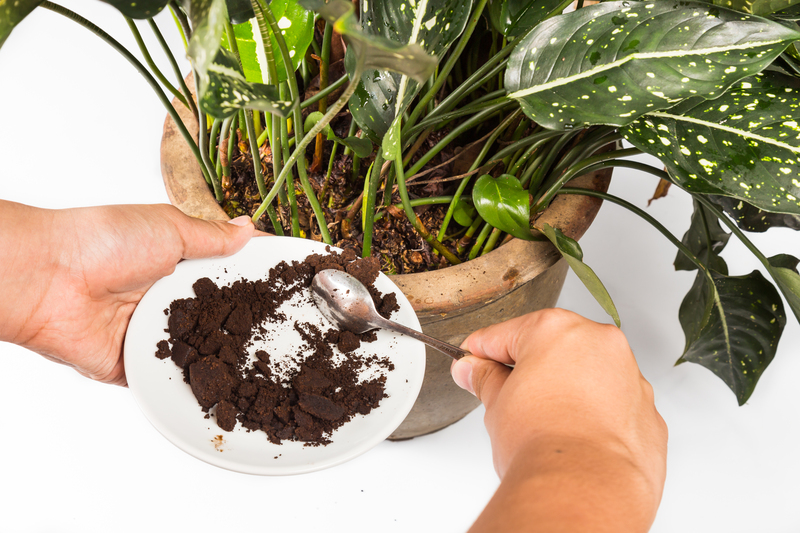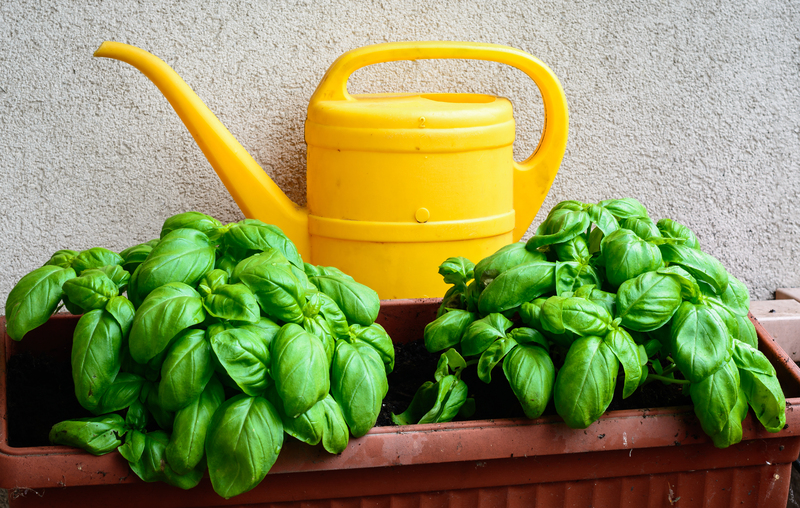Natural Solutions for Decomposing Tree Stumps Safely
Are you dealing with a stubborn tree stump in your yard and searching for a chemical-free, environmentally friendly way to remove it? Natural methods for decomposing tree stumps not only protect your landscape but also minimize harm to the surrounding ecosystem. In this comprehensive article, we will delve into effective, safe stump removal solutions you can implement right at home. These approaches utilize organic materials and harness the power of nature to accelerate stump decomposition.
Why Choose Natural Stump Decomposition?
Conventional stump removal often involves harsh chemicals or costly mechanical processes. While effective, these options sometimes have negative effects on soil, groundwater, and the environment. By selecting natural techniques, you ensure enhanced safety for children, pets, and pollinators while preserving your garden's ecological balance.
Benefits of Natural Stump Removal Solutions
- Environmentally Friendly: No toxic residues in the soil or water supply.
- Low Cost: Most methods use materials already present at home.
- Safety: Eliminates the risk of burns, chemical exposures, or injury from machinery.
- Soil Health: Enhances microbial activity and nutrient cycling.
- Biodiversity: Supports beneficial fungi, insects, and wildlife.

Understanding the Natural Decomposition Process
The natural decomposition of a tree stump involves breaking down its woody tissues through microbial, fungal, and insect activity. This process can take several months to several years, depending on the stump's size, species, and the environment. By creating ideal conditions for decay, you can greatly speed up this process--making organic stump removal both feasible and practical.
Key Factors Affecting Stump Decomposition
- Moisture: Adequate water activates fungi and bacteria.
- Oxygen: Aerobic microbes are more efficient decomposers.
- Nitrogen: Speeds up microbial break-down of lignin and cellulose.
- Stump Size: Smaller stumps decompose more rapidly.
- Stump Species: Hardwood stumps (e.g., oak) take longer than softwoods (e.g., pine).
Top Natural Methods for Decomposing Tree Stumps
1. Encourage Fungal Growth with Mushroom Spores
One of the most effective and safe methods for stump decay is to introduce fungi--nature's primary decomposers. Inoculating your stump with mushroom spores not only accelerates stump decomposition but also supports local biodiversity.
- Choose the Right Mushrooms: Varieties like oyster mushrooms (Pleurotus ostreatus) or shiitake (Lentinula edodes) are ideal. These species break down tough wood fibers quickly and are non-toxic.
- Drill Holes: Use a power drill to make deep holes (0.5-1 inch wide, 4-6 inches deep) across the surface and sides of the stump.
- Insert Spawn: Fill the holes with mushroom sawdust spawn or plug spawn and seal with natural wax (such as cheese wax).
- Moisten and Mulch: Keep the stump moist and cover it with leaf litter, straw, or wood chips to retain humidity and protect the mycelium network.
Within a year, the stump will become soft and riddled with mycelium, making it easy to break apart. Plus, you may harvest edible mushrooms as a bonus!
2. Composting Your Tree Stump In Place
Compost decomposition is a tried and true method for safely breaking down yard debris, including stumps. By transforming your old stump into a nutrient-rich "compost pile," you feed soil microbes and foster speedy decay.
- Shred the Stump: If possible, chainsaw or chop the stump into smaller pieces to increase surface area.
- Add Nitrogen: Sprinkle rich nitrogen sources--like grass clippings, manure, blood meal, or coffee grounds--on and around the stump. High-nitrogen materials help break down tough lignin.
- Layer with Browns: Add dry leaves, straw, or shredded cardboard as "brown" carbon sources to balance the compost.
- Keep Moist: Water the pile regularly to maintain dampness, which is crucial for composting microbes.
- Cover and Wait: Place a tarp or thick layer of mulch over the area. Turn the materials occasionally with a pitchfork to aerate and speed up decomposition.
This method can turn a stump into humus within 6-24 months, depending on stump size and environmental factors.
3. Epsom Salt Stump Decomposition
Epsom salt, or magnesium sulfate, is a popular natural stump removal technique. While it's not as fast as chemical herbicides, Epsom salt is safe, inexpensive, and accelerates wood rotting.
- Drill Holes: Use an electric drill to make 1-inch diameter holes as deep as possible into the stump's top and sides.
- Fill with Epsom Salt: Pour dry Epsom salt crystals or a strong saltwater solution into each hole. For best results, use about one pound per square foot of stump.
- Seal Holes: Cover holes with candle wax, mud, or plastic to prevent the salt from washing out.
- Keep Covered: Place a tarp, thick mulch, or a weighted black plastic sheet over the stump to exclude rainfall and sunlight, encouraging the decay process.
- Repeat: Every month, refresh the salt in the holes and re-moisten the stump if needed.
Depending on the stump size, complete decomposition may take 6-18 months. The area can then be re-seeded or replanted after removal.
4. Mulching and Moisture Enhancement
Mulching not only beautifies your landscape but also helps naturalize stump breakdown by improving moisture retention and creating habitat for decomposers. Here's how to speed up natural stump decay using mulch:
- Layer Mulch: Surround the stump with 6-12 inches of wood chips, bark, straw, or shredded leaves.
- Water Regularly: Ensure the mulch and soil remain consistently moist--especially during dry spells.
- Add Worms: Red wigglers or earthworms will invade the rotting wood and accelerate the breakdown process.
- Cover with Tarp (Optional): To hold in moisture and heat--which increases decomposition rates--cover the mulch with a black plastic sheet.
This technique harnesses nature's recyclers, such as beetles, termites, and fungi, to convert your stump into nutrient-rich soil over time.
5. Leveraging Organic Nitrogen Sources
Boosting nitrogen is key for stimulating microbial decomposition of woody stumps. Here are some organic nitrogen sources that work wonders:
- Blood meal or cottonseed meal sprinkled generously around the stump's base and surface holes.
- Poultry or rabbit manure (aged to avoid burning plants or soil).
- Fresh grass clippings as a top dressing.
- Compost tea or fish emulsion diluted with water and poured onto the stump monthly.
Nitrogen supercharges microbe populations, thereby letting them feast on tough stump fibers much faster.
Frequently Asked Questions About Safe Stump Decomposition
How Long Does Natural Stump Decomposition Take?
Natural decomposition rates vary widely. Small, softwood stumps (like pine or fir) may decompose in as little as 6-18 months using the above methods. Large, hardwood stumps (oak, maple) can take 2-5 years. The process can be sped up by combining several techniques and regularly checking moisture and nitrogen levels.
Are Fungi or Bacteria More Important?
Both play vital roles in organic stump decay. Fungi, especially wood-rotting varieties, break down tough lignin and cellulose, while bacteria handle simpler carbohydrates and wood sugars. Promoting both ensures thorough and rapid decomposition.
Can Epsom Salt Damage Surrounding Plants?
Properly applied (sealed in holes, moderate quantities), Epsom salt is generally safe. Avoid overusing it, and prevent runoff onto lawns and flower beds to protect soils from excess sulfate or salt buildup.
Will Insects Be a Problem?
Decomposing stumps attract insects like beetles and termites, who help break down the wood. Unless the stump is near your home's foundation, these insects usually pose no threat and are a natural part of the process.
Complementary Natural Stump Removal Strategies
Manual Enhancement: Chopping, Digging, and Burning (as a Last Resort)
- Chop and Chip Away: As the stump softens, chop off decayed wood with an ax or shovel. Removing the softened layers exposes more surface area to decomposers.
- Excavation: After several months, the central core will loosen, making it possible to dig out the remains with basic tools.
- Controlled Burn: In some rural areas, safe, controlled burning is permitted. This should be a last resort, used only if local regulations and fire safety guidelines allow.
Note: Burning is less environmentally friendly and not recommended as a primary natural solution.
Safety Guidelines for Natural Stump Breakdown
- Wear Gloves and Eye Protection: When drilling, chopping, or handling organic materials.
- Use Tools Safely: Always handle axes, drills, chainsaws, and shovels with care--especially around children.
- Avoid Chemical Additives: Stick to organic substances and never mix chemical weed killers with natural amendments.
- Protect Wildlife: Check for animal nests before beginning decomposition activities around the stump.

Key Takeaways: Eco-Friendly Tree Stump Solutions
- Natural stump decomposition is environmentally safe, low-cost, and enhances soil health.
- Methods like fungal inoculation, Epsom salt, composting with nitrogen boosters, and mulching are highly effective.
- Combining several techniques often maximizes results.
- Patience is vital--the natural method takes months to years, depending on stump size and species.
Conclusion: Transforming Stumps into Soil--The Natural Way
Getting rid of unwanted stumps doesn't require harmful chemicals or heavy machinery. By using natural solutions for decomposing tree stumps safely, you foster a thriving backyard ecosystem, improve soil fertility, and align your gardening practices with nature. Whether you choose mushroom inoculation, Epsom salt application, composting, or mulching, nature's recyclers are ready to help you reclaim your garden space--safely and sustainably.
Embrace these organic stump removal techniques and discover how easy, safe, and rewarding it is to let Mother Nature do the hard work for you.
If you found this guide helpful, please share it with fellow gardeners and leave your stump success stories in the comments. Together, we can promote greener, safer solutions for every landscape.